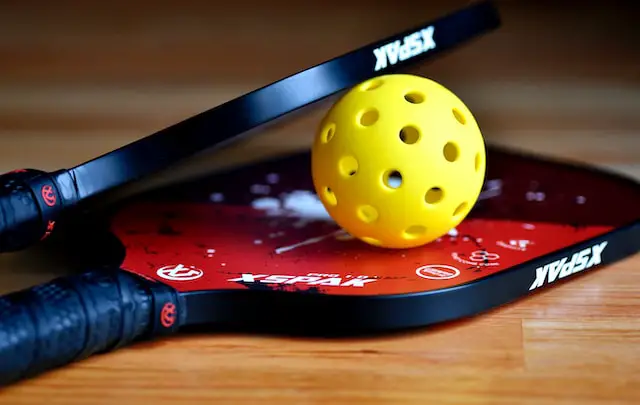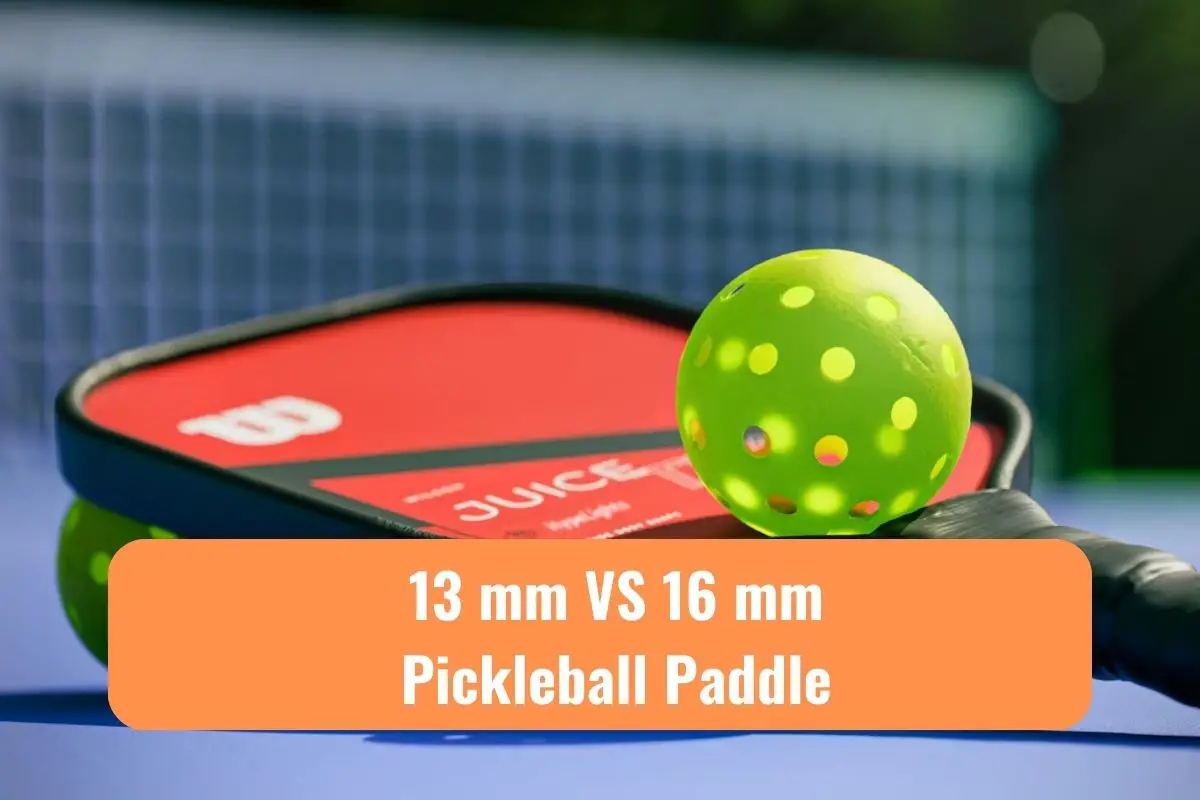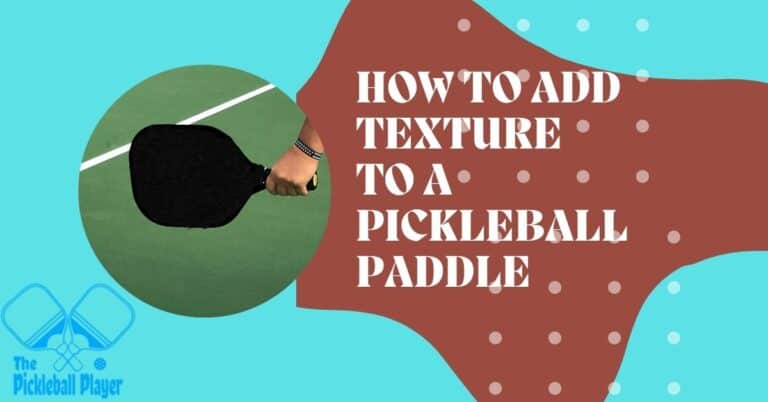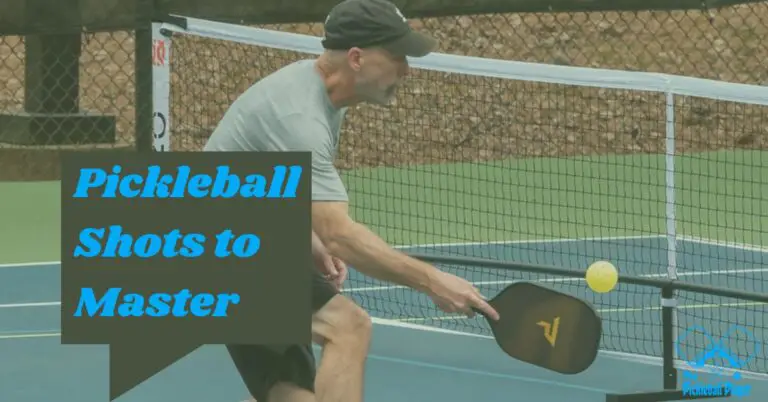13 mm VS 16 mm Pickleball Paddle: Which One Should You Pick?
Do you need help determining whether to get a 13 mm or 16 mm pickleball paddle? Or do you want to know the difference between them? Well, you are not alone, many beginner players, unfamiliar with their playing style, want to know about this.
We have played with both 13 mm and 16 mm pickleball paddles and will be sharing all our discoveries about both paddles here. Hopefully, by the end of this article, you can decide if you need a paddle with a thick or a thin core.
So let’s get into it.
About Author

If you buy through our affiliate links, we’ll earn a small commission at no extra cost to you. Read more.
Table of Contents
- What is a Pickleball Paddle’s Core Thickness?
- Pickleball Paddles with 13 mm Thin Core
- Thick Pickleball Paddles With 16 mm Thick Core
- How to Choose Between 13 mm vs 16 mm Pickleball Paddle
- The Bottom Line
What is a Pickleball Paddle’s Core Thickness?

Pickleball paddles come in many shapes, sizes, and weights. But now you can find paddles with different core thicknesses. When it comes to paddles, even the slightest change can alter the game’s outcome, that change can be 3 mm extra thickness. There are usually three types of core thicknesses that are measured in millimeters:
- Paddles with thin core: 11 mm–13 mm
- Paddles with medium or standard core: 14 mm and 15 mm
- Paddles with thick core: 16 mm and above
Everyone has a different playing style and needs, so their core choice has to be accordingly. If you like more power and pop, the thin-core paddle is for you. However, those who want complete game control should go for thick-core paddles.
Pickleball Paddles with 13 mm Thin Core
A pickleball paddle with a 13 mm core is considered thin but offers a lot of power and speed. Many players like to have their paddle-producing power and hit the ball hard instead of them doing so. 13 mm paddles are stiff and have hard surfaces, generating power and making a lot of “POP.”
When the ball hits the 13 mm paddle, it causes vibration which then transfers to the thin surface, and ultimately that tremble reaches your arm. It can cause pickleball elbow or worsen the current issue. In this case, it’s better to pick these pickleball paddles for tennis elbow.
13 mm core paddles are easy to maneuver, which allows you to move quickly. Thin paddles also only hold the ball briefly and let it bounce back quickly. This trait could put your opponent in a challenging situation as they won’t expect a quick ball return.
Many brands are making 13 mm paddles that you can try if power and speed are what you are looking for.
PROLITE Illuminate 2.0
A Prolite Illuminate 2.0 has a polypropylene core and carbon fiber face. This middleweight paddle with a 13 mm thick core becomes an excellent paddle for power players. It allows a good spin and speed. Prolite illuminate 2.0 has good noise absorption, good enough to be approved by USAPA.
Another fantastic thing about this paddle is it comes with a one-year warranty with no dead spots. That is something every player wants.
Phantom Savage 13 mm
Phantom Savage 13mm is another highly recommended paddle for precision and power. It is made with a T800 carbon Fiber surface, which means the entire paddle is made without any joints. That makes it a durable and rugged paddle. In short, as a power player, you can have a great ground stroke and volley with Phantom Savage.
Thick Pickleball Paddles With 16 mm Thick Core
16 mm thick core is considered standard core, as you will find very few paddles that are thicker than this. A thick core gives you more control and allows you to hit the ball with precision and accuracy. It improves your blocks and drop shots. With a 16 mm core, you get consistency, even when you miss hitting the ball, which is key in a pickleball game.
A 16 mm core is also more forgiving, with a more significant sweet spot. This is a perfect thickness for a beginner or intermediate player. Even many 5.0 players like Ben Johns use paddles with 16 mm thick cores in their tournaments. Here is what Ben Johns says about why he prefers paddles with 16 mm core.
The thicker the core, the better absorption you will have. When a ball hits the paddle, it absorbs energy, stops vibration, and gives you enough control.
Franklin Sports Pro16mm Pickleball Paddle
Franklin Sports Pro pickleball paddle is made for professional players. Its polypropylene core and fiberglass surface, combined with MaxGrit technology, make it a perfect paddle. This paddle dampens the vibration for control and precise hits.
Diamond Warrior Edge Paddle
Diamond Warrior Edge Guard is an excellent paddle with a 16 mm polymer core for controlled power. Once you start playing with this paddle, it’s hard not to notice its softness. That makes the dinking, touch shots, and control very easy. If you can generate your power, you will fall in love with this paddle. Its control and generous sweet spot are enough to make you win.
How to Choose Between 13 mm vs 16 mm Pickleball Paddle
Even after reading about 13 and 16-mm paddles, you might still need clarification on what to pick. There is yet to be a definite answer about who should play with either of these paddles. It all depends on your preference and gaming style.
If you still need to learn about your style, try 13mm and 16mm paddles. That will help you determine your gaming style and which core thickness suits you best.
However, if you don’t have the means to try paddles or are ordering online and have to pick one, go with a 16mm core. As a beginner, you need more control and a forgiving paddle with a bigger sweet spot, which you can get from a thick core.
Later, after establishing your game, you can try playing with a 13 mm pickleball paddle and make a more accurate decision.
Another option is to get demo pickleball paddles and try them out.
The Bottom Line
We hope everything about the thickness of the core and how it affects your game is clear by now. Also, you may know how to pick your paddle. If you like, choose one from our suggestions or find one yourself. Whatever you do, keep playing, keep enjoying.







